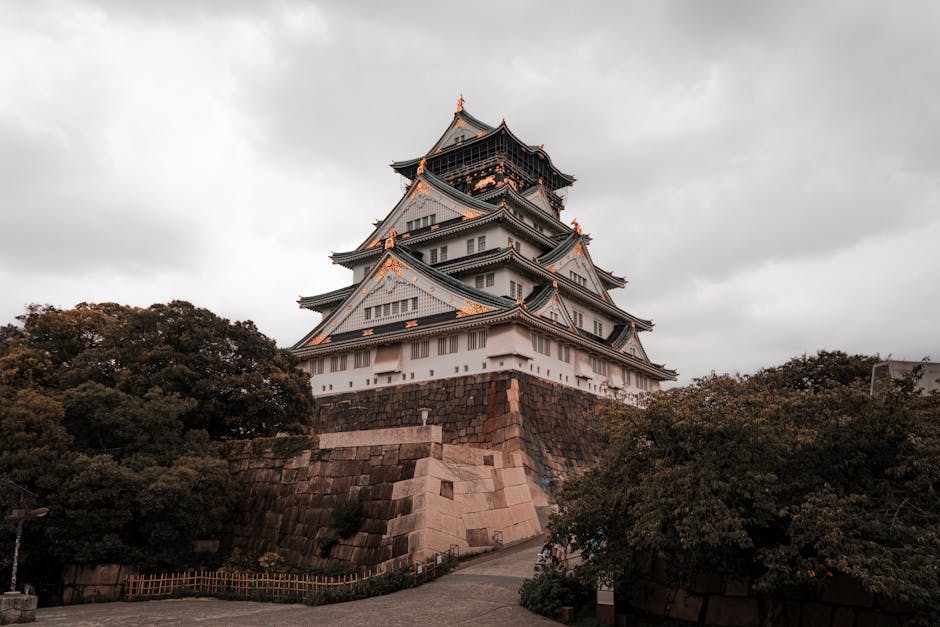
Imagine stepping through a time portal, not just to observe history, but to inhabit it. The very idea is thrilling, and in the heart of Shiga Prefecture, at the Nagahama Castle Historical Museum, such an opportunity beckons. Here, visitors can embark on a unique "One-Day Lord" experience, offering a profound glimpse into the lives of the powerful figures who once commanded these magnificent fortresses. But what truly defined a castle, and the lord who ruled it, in the tumultuous tapestry of feudal Japan?
The Castle's Strategic Genesis: A Warlord's Ambition
To understand the essence of a castle lord, one must first grasp the age in which they lived. Japan's Sengoku period (mid-15th to early 17th century) was an era of ceaseless conflict, a brutal dance of daimyo vying for supremacy. Castles were not merely defensive structures; they were the very sinews of power, strategic command centers, and symbols of authority. Each stone, each moat, each towering keep, told a story of ambition, defense, and the relentless pursuit of unity.
Hideyoshi's First Domain: A Masterstroke of Strategy
No castle embodies this more vividly than Nagahama Castle itself. Its origins are intimately tied to one of Japan's most celebrated, and unlikely, unifiers: Toyotomi Hideyoshi. Born a peasant, Hideyoshi's meteoric rise under the formidable Oda Nobunaga is a saga of unparalleled cunning and charisma. Nagahama Castle, constructed in the 1570s, was his first major independent domain, a crucial stepping stone on his path to becoming the ruler of all Japan.
Imagine young Hashiba Hideyoshi (as he was then known), surveying the strategic landscape of Shiga. The castle's location near the shores of Lake Biwa was no accident. It offered control over vital trade routes and a clear view of any approaching threats. Here, Hideyoshi honed his administrative skills, governed a burgeoning populace, and nurtured the loyalty that would prove indispensable in his future campaigns. This was where a mere general truly began to forge the identity of a future regent, demonstrating his strategic acumen not just in battle, but in the very foundations of governance.
Life as a Lord: Power and Purpose
What did it truly mean to be a "Lord" (城主, jōshu)? It was a role laden with immense responsibility. A lord was the ultimate authority within their domain, a military commander, a judge, an administrator, and a patron of culture. They were responsible for the welfare of their people, the defense of their lands, and the execution of justice. Every decision, from the allocation of rice harvests to the deployment of samurai, directly impacted the lives of thousands.
The castle keep, the heart of the fortress, was often more than just a military stronghold. It housed the lord's family, served as a treasury, and sometimes even featured tea rooms or viewing platforms – places where the lord could reflect, entertain, and project an image of cultured power. The drama of the Sengoku period played out within these walls: councils of war, political intrigues, grand celebrations, and the quiet moments of a lord contemplating their next move on the grand chessboard of Japan.
The Nagahama Castle Historical Museum Experience
Today, the reconstructed Nagahama Castle Historical Museum stands proudly on the original site, a testament to this vibrant past. The "One-Day Lord" experience isn't just a costume play; it's an invitation to connect with this legacy. As you stand within its walls, you're not just observing artifacts; you're tracing the footsteps of Hideyoshi. You can gaze out from the top floor, much as he might have, contemplating the strategic vistas of Lake Biwa and the surrounding lands of Shiga.
This immersive experience allows you to feel the weight of history, to appreciate the architectural marvels that once dominated the landscape, and to understand the human drama that unfolded within their confines. It’s a chance to consider the pressures, the decisions, and the enduring impact of men like Hideyoshi, who shaped the very destiny of a nation from their castle strongholds.
Echoes of the Past: Nagahama's Enduring Legacy
While the original Nagahama Castle was dismantled in the early Edo period, its spirit lives on. Its materials were famously used in the construction of the magnificent Hikone Castle, a testament to the enduring, recycled nature of power and resources in feudal Japan. The Nagahama Castle Historical Museum, with its faithful reconstruction, ensures that this crucial chapter of history remains vibrant and accessible.
Experiencing a "One-Day Lord" program is more than just a historical reenactment; it’s a profound journey. It allows us to bridge the centuries, to understand the monumental efforts involved in nation-building, and to appreciate the strategic brilliance and human stories behind the formidable walls of Japan's castles. It reminds us that history is not just a collection of dates and names, but a living, breathing narrative of human ambition, ingenuity, and the relentless march of time.
Comments
Post a Comment